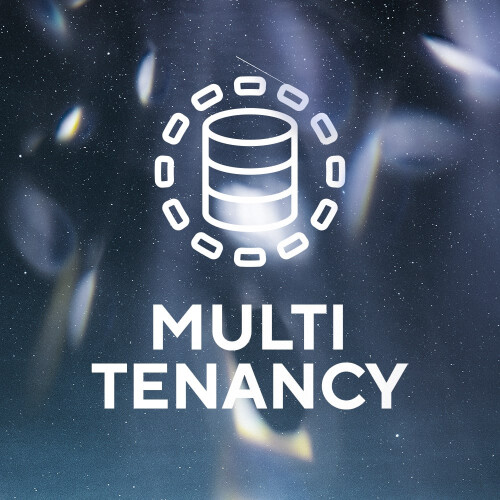
Table of contents
- What is Multitenancy Anyway?
- Why Multitenancy?
- How Does Multitenancy Work in Laravel?
- The Value of an Expert Agency
- History of Multitenancy
- Technical Deep Dive
- Pros and Cons of Multitenancy
- Pros
- Cons
- Case Studies
- Comparison with Alternatives
- Security Considerations
- Scaling and Performance
- Cost-Benefit Analysis
- Future of Laravel and Multitenancy
- FAQs
Laravel Multitenancy Web Applications: A Glimpse into the Future of Web Development
25. August 2023
Published in:
WebdevelopmentIn the digital age, dynamic and scalable web applications are not just a wish but a necessity. With frameworks like Laravel, which has made a name for itself in the industry, such applications can be achieved. One of the most fascinating features of Laravel is its multitenancy capability. What does this mean exactly? Why should you care? And how can a high-quality digital agency help you make the most of it? Find out more in this article.
What is Multitenancy Anyway?
Multitenancy allows a software application to serve multiple independent instances from a single codebase. It's like having an apartment building where each unit shares the same floor plan, but each is designed according to the tenant's desires and needs.
In web development, this means that you can have separate databases, resources, and logic for different customers, all under a single Laravel application.
Why Multitenancy?
-
Cost Efficiency: Imagine having to create and maintain a separate application for each of your clients. Multitenancy drastically reduces overhead and development time.
-
Faster Time-to-Market: Once your main application is up and running, onboarding new clients takes a fraction of the time.
-
Unified Updates and Maintenance: When an update or a change is made to the main codebase, all tenants benefit, making maintenance simpler and more consistent.
How Does Multitenancy Work in Laravel?
Thanks to its robust architecture and active community, Laravel has developed many packages and solutions to implement multitenancy. Here are some things that make Laravel particularly effective at implementing multitenancy:
-
Database Isolation: Each tenant gets their own database or schema, ensuring data security and isolation.
-
Tenant-Specific Configuration: Laravel allows for unique configurations for each tenant, from API keys to user-specific settings.
-
Flexible Routing Options: Custom routes can be created for each tenant, ensuring a unique user experience.
-
Middleware and Authentication: Security is crucial. Laravel allows for tenant-specific authentication processes and middleware implementations.
The Value of an Expert Agency
Of course, the technical aspects are just one side of the coin. When implementing multitenancy, it's invaluable to have partners like mindtwo by your side.
-
Expertise: A deep understanding of Laravel and its many features ensures your project adheres to the highest standards.
-
Best Practices: It's not just about building something, but building it right. Agencies experienced in web development can help you avoid pitfalls and craft a scalable solution.
-
Ongoing Support: Technology is ever-evolving. An agency doesn't just provide development services, but also support and consultation for future expansions and updates.
History of Multitenancy
Multitenancy isn't just a modern term. In the early days of cloud computing, there arose the idea of using resources more efficiently by serving different customers through the same infrastructure. The main motivation? Reduction of redundancies, cost-efficiency, and optimized maintenance. Over the years, this approach has continually evolved and is now an integral part of modern frameworks like Laravel.
Technical Deep Dive
Laravel, renowned for its elegant syntax and flexibility, provides impressive tools for multitenancy. Specialized packages like tenancy/tenancy or spatie/laravel-multitenancy make implementation a breeze. When implementing, a key decision involves choosing between a database per tenant or a shared schema with tenant-specific tables. Laravel's Eloquent ORM seamlessly supports both approaches.
Pros and Cons of Multitenancy
Like any tool, multitenancy has its advantages and challenges:
Pros
- Cost Efficiency: Reduced server and maintenance costs.
- Centralized Updates: One update serves all tenants.
Cons
- Complexity: An error can impact all tenants.
- Security Concerns: Data breaches could affect all tenants.
Case Studies
A European e-commerce startup utilized Laravel's multitenancy to consolidate country-specific stores under a single application. This allowed rapid expansion into other markets without the need for infrastructure overhauls.
Comparison with Alternatives
While Laravel leads the pack in the PHP world, other frameworks like Django for Python or Express for Node.js offer similar multitenancy solutions. However, Laravel stands out due to its active community, comprehensive documentation, and ease of implementation.
Security Considerations
Laravel takes security seriously. Whether it's CSRF protection, SQL injection security, or authentication – Laravel has it covered. In a multitenancy setup, it's essential to take extra precautions, such as through database isolation and secure tenant identification.
Scaling and Performance
With Laravel's queue system, Eloquent ORM, and built-in caching, scalability is no problem. However, special considerations regarding database optimization and load balancing should be taken into account when dealing with multitenancy.
Cost-Benefit Analysis
While the initial development costs for multitenancy might be higher, the long-term savings through reduced maintenance, centralized updates, and scalability more than make up for it.
Future of Laravel and Multitenancy
With technology's rapid evolution, multitenancy will only become more efficient and secure. Laravel, always at the forefront of PHP development, will undoubtedly continue to offer pioneering tools and features in this domain.
FAQs
1. What exactly is multitenancy?
A: Multitenancy allows a single instance of a software application to be run while providing services to multiple clients (referred to as "tenants"). Each tenant experiences the application as if it were created just for them.
2. Why should I opt for multitenancy?
A: Multitenancy can make development, maintenance, and scaling more cost-effective. Imagine making updates or changes in one central location rather than implementing them for each tenant separately.
3. Is multitenancy suitable for my small/mid-size business?
A: Yes, multitenancy can offer advantages to both small startups and large corporations, depending on the business model and technical needs.
4. How secure is my data in a multitenancy setup?
A: With proper implementation and safety measures that Laravel provides, data can be kept secure and isolated. Data separation and strict authentication protocols are crucial.
5. Will all tenants be affected during a system breakdown?
A: There's a risk that a central issue may affect multiple tenants. However, robust security and backup strategies can minimize or prevent such downtimes.
6. How does multitenancy impact performance?
A: In most cases, multitenancy has little to no negative influence on performance. In fact, in some scenarios, it might improve performance due
Can we help?
You have an exciting project and want to work with us? Contact us now!


